Author: Adam Bunker
What is AI in customer support?
Artificial intelligence is an umbrella term for the technology behind a wide range of software applications – from large language model (LLM) chatbots to backend automation tools – and it’s a topic that’s increasingly hitting headlines.
In the customer service industry specifically, AI is a powerful force for improving the overall customer experience – and driving up customer satisfaction in the process.
When people think of artificial intelligence in this space, they usually think first of chatbots that can participate in customer conversations in lieu of a human support agent. But AI-powered CX tools are much wider-reaching than that.
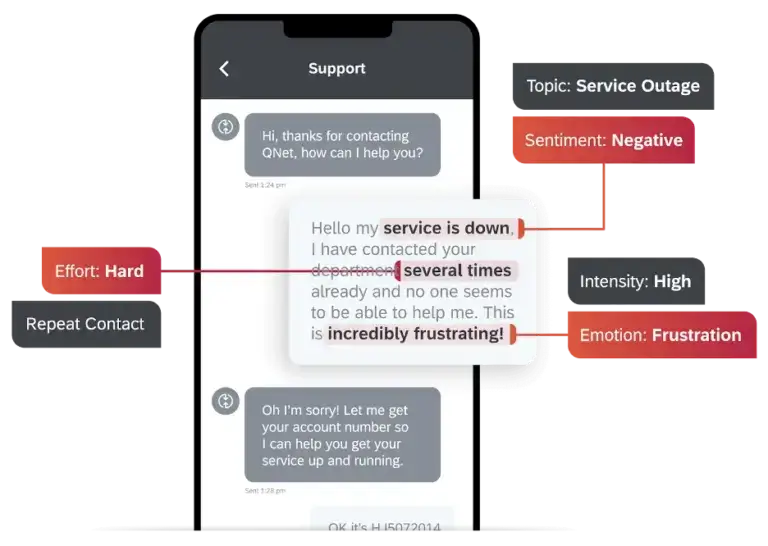
In today’s customer support environment, artificial intelligence isn’t a way to replace human agents – it’s a way to help them do their best work by providing assistance across the entire spectrum of customer interactions.
AI can help…
- Empower agents to be more empathetic and understanding.
- Handle monotonous, time-consuming tasks.
- Monitor and understand customer interactions at scale,
- Improve retention on both the customer and the employee side
How does AI work (in simple terms)?
Only got a minute? Here’s your quick takeaway: AI systems are built on models that ‘train’ themselves on large quantities of data – these models look for patterns in data that they can use to declare a result or generate a response.
A simple analogy here might be to imagine a chef in a kitchen who’s trying to improve a recipe. If the chef has only ever tried one kind of meal before, they won’t have much to go on. But if they’ve eaten thousands of different dishes, they’d begin to understand which combinations of flavors work together, and they’d slowly improve their recipe through trial and error. AI is the same – it sucks in data sources and uses that information to ‘train’ itself to improve its output.
Discover how AI can be your competitive advantage
How has AI in customer service evolved?
While the use of artificially intelligent solutions in business is nothing new, the proliferation of newer AI technologies – for instance, the LLMs behind generative AI services like ChatGPT – has rocketed the topic to the forefront of the public consciousness.
But what do these new tools mean for the world of customer support? The short answer is that a rising tide lifts all boats. As AI tech improves, so do the customer support tools that it enables.
We’ll get onto specific use cases later in this article, but first, there are a few key concepts to understand if you want to keep up with the way artificial intelligence is being put to use in the CX industry:
Large language models
These are the AI tools currently making headlines. ChatGPT, Microsoft Bing and Google Bard are all AI-powered tools that use large language models to train their understanding of how we use language to communicate.
Their data sets are effectively created by taking an enormous snapshot of swathes of the internet and processing everything into algorithmic understanding. The resulting software is referred to as ‘Generative AI’ tools since they’re able to generate new content on command.
Machine learning
Machine learning is the term given to the process of training, testing, and re-training to improve AI models. Importantly, machine learning tools can self-improve without human interference. That doesn’t mean that these AI tools will get infinitely smarter until they can take over the planet – it just means that every new interaction gets added to the model, resulting in smarter results in the future.
A good way to understand machine learning in action is to see it learn to play a video game. The AI has no idea it’s playing Super Mario, but it does know that whatever it did last time resulted in Mario dying – so next time it’ll do something different. Eventually, all those learnings will result in a playthrough that ends in a completed level.
Natural language processing (NLP)
In customer support, natural language processing is probably the most important trait for an AI tool to have. NLP enables an AI model to understand what’s being said by both customers and agents, as well as to discern abstract values like effort, intent and emotion.
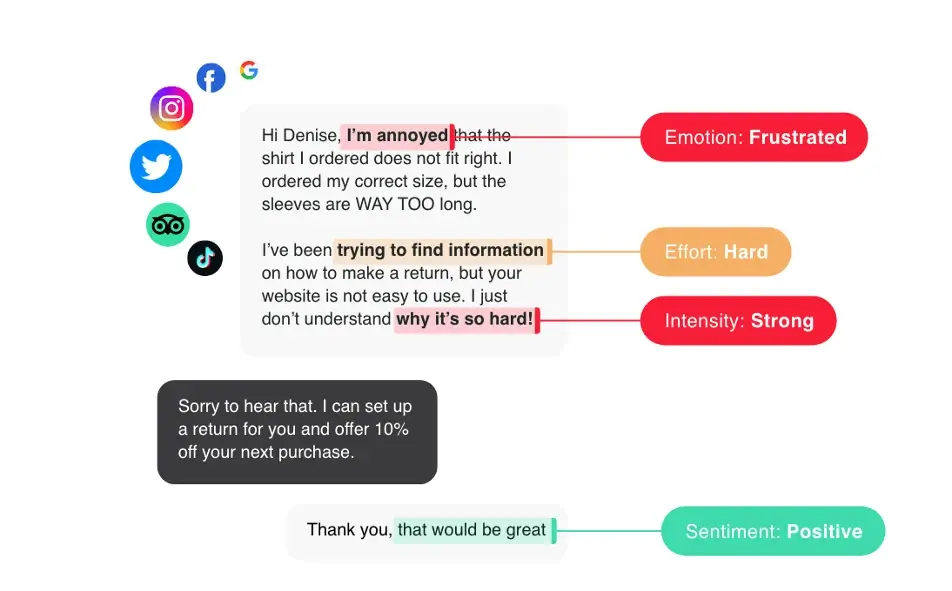
The word ‘natural’ is key here. The way humans speak is messy, layered, nonlinear and – to a machine – confusing. Natural language processing uses models trained on huge conversational data sets to be able to understand everything being said in real-time. And that means being able to understand the difference between outstanding service and an outstanding bill.
Combining structured and unstructured data
Structured data has always been easy for computers to understand. Numerical metrics and scores are simple to combine, track and cross-reference. Unstructured data is much more complex. How, for example, do you score a conversation? How do you identify trends from phone calls? And how do you turn an angry or happy call into a metric?
Modern customer support AI is built to do exactly that: combining the simple numbers of structured data with the messier, unstructured data that comes from human interactions – and doing so in a way that can help CX teams improve.
Why is AI in customer service important?
The reason you’d deploy AI as part of your customer support offering is the same reason you’d invest in any new technology: to improve things for the customer and your employees.
With AI in particular, there are a few strands working together to help move businesses in that direction. The first is in meeting customer expectations. Today’s customers expect instant answers and generally choose to self-serve first if at all possible. Microsoft suggests that some 86% of consumers want companies to provide self-service options, for example, while Harvard Business Review suggests 81% actually prefer to go down that route before they need to speak to an agent.
Research from HubSpot, meanwhile, shows that a huge 90% of consumers now expect an ‘immediate’ response to customer service inquiries – and AI can certainly help enable that speed.
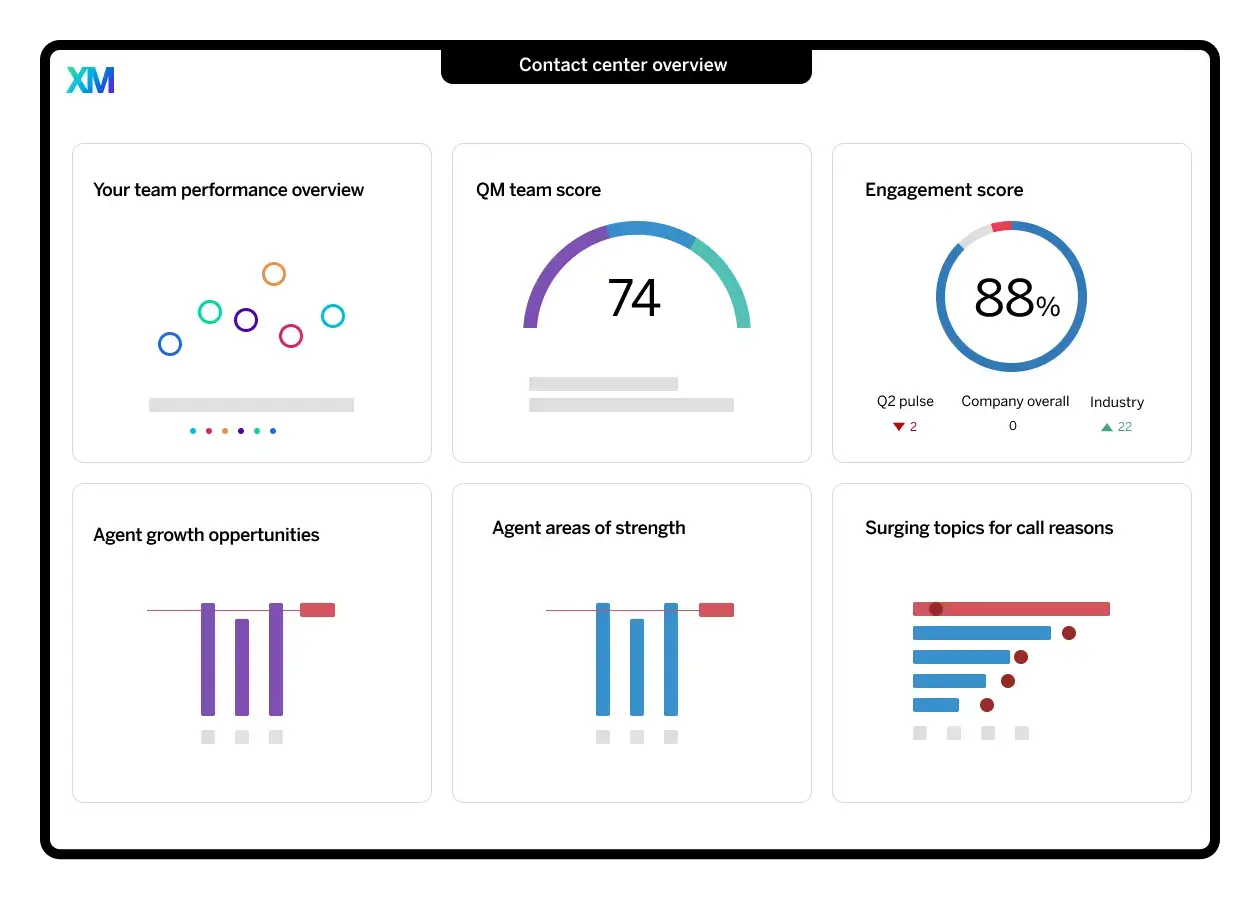
The second strand is in enabling agents to provide better customer service. We’ve already mentioned that AI shouldn’t be seen as a system to replace human agents, and that’s an important trend. Zendesk suggests that 68% of agents report feeling overwhelmed at times, so it’s crucial that businesses provide them with tools that can help make their jobs more manageable. Zowie cites that some 70% of customer queries can be automated with AI. That means there are a lot of simpler queries that can be offloaded to free up human agents for more pressing calls and interactions.
Lastly, there’s the raw ROI of integrating AI as a key tool for your customer service team. VentureBeat reports that AI in customer service can make for an overall cost reduction of up to 30%, while Zowie claims that smart use of the right AI technology can lead to a 47% increase in average order value.
Get it right and there are huge financial wins to be had. Get it wrong, however, and the opposite is true. Our own research shows that, globally, an enormous $4.7 trillion is being left on the table each year thanks to negative customer experiences.
5 ways AI can improve customer support (with examples)
Okay, so how can you use AI in customer service to transform things for every customer and customer service agent alike? Let’s dig into some of the practical applications that artificial intelligence makes possible…
1. Helping agents do their best work
Artificial intelligence imbued with natural language processing can help agents close more tickets and solve more issues, while also boosting customer satisfaction with every interaction.
AI can understand what’s happening in any call or live chat, marry that with rich customer context, and provide real-time prompts to agents that can help them keep customers onside. The best AI tools even know when it’s the right time to offer a personalized discount based on a given customer’s history and preferences.
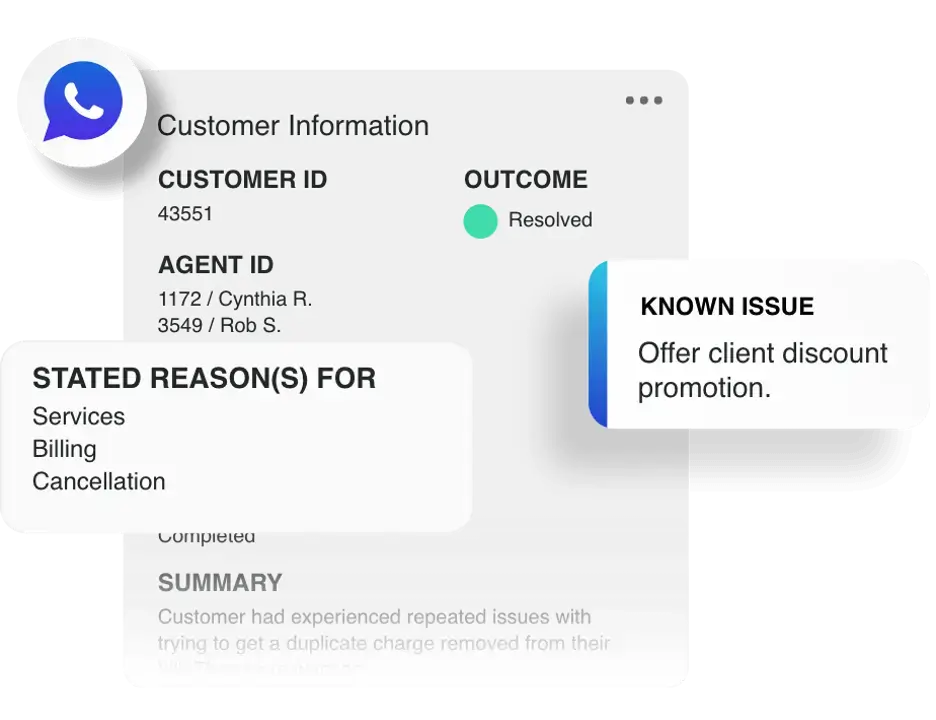
Example: A customer is on the phone to an agent about a billing issue. With the help of AI, the agent sees a pop-up with that customer’s history – enabling them to apologize for the fact that this has happened before. Later in the call, another AI-powered message identifies the perfect time to acknowledge the customer’s frustration and offer a tailored discount.
2. Enable immediate, 24/7 customer service
Customers expect lightning-fast responses, no matter the time of day. Not every business is in a position to offer round-the-clock human customer service, but AI can help you build self-service, chatbot, interactive voice response, or any other manner of automated solution that keeps customers feeling heard and understood, 24/7. That also includes providing multi-language support that can help customers reach a solution in their native tongue.
Example: A customer encounters a common, straightforward issue logging into their account in the middle of the night. They begin a chat with an AI-powered chatbot, which replies instantly and helps them resolve their issue by surfacing a relevant Knowledge Base article.
3. Automating tasks that help teams prioritize
Customer service teams are always busy, but AI can ensure that agents never spend too much time on monotonous, time-consuming tasks that keep them away from what matters most: helping customers.
Post-call reporting, for example, can easily be handled by artificial intelligence platforms capable of logging summaries rich in detail and built for trend spotting. Important information like call time, issue resolution, customer frustration and next steps can all be automated if your contact center management solution has natural language processing built in.
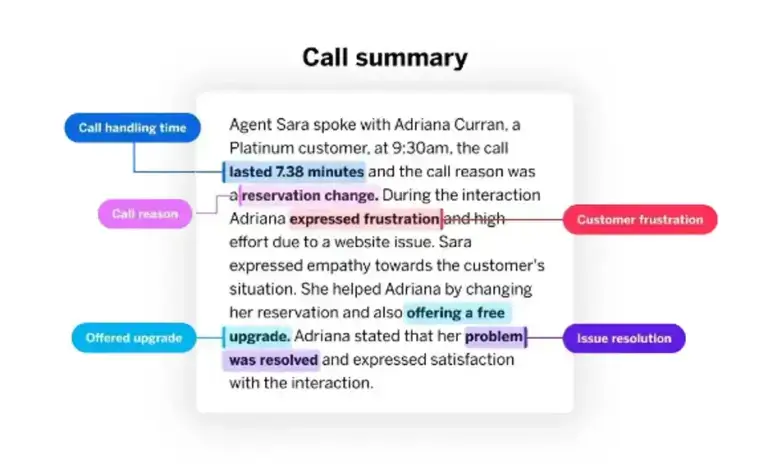
Example: There’s a high volume of calls coming into a contact center due to a recent software update that’s left customers confused. AI-powered contact center software helps keep agents available for these calls by handling ticketing, next steps and call summaries for them.
4. Agent onboarding, scoring, and coaching
Customer service agents benefit from continual coaching – it helps them feel engaged and empowered to do their best work. But it’s impossible to understand how any given agent is really performing if you’re stuck manually sampling calls. AI tools can listen to every interaction and score agents against things like script compliance, empathy and issue resolution, and even proactively book coaching sessions whenever a relevant opportunity arises.

Example: During a call, natural language processing software detects that a specific agent keeps veering off-script. It flags this to the contact center manager and schedules an automated training session for the agent in question.
5. Uncovering customer pain points
Customer service interactions don’t exist in a vacuum. They’re an integral part of the overall customer experience – and that makes them essential learning opportunities. But if you’re scrambling to handle calls as it is, you won’t learn anything from all that valuable information. AI, then, as well as being a great way to streamline operations and help agents out, is also the method by which you turn customer data into insights that can transform your business.
Example: Your customer service AI detects a growing trend: a higher-than-average number of users has begun mentioning the same issue. This trend-spotting happens across all touchpoints and in real-time, flagging that there’s a potential experience gap that needs to be closed quickly – allowing the UX or product team to act fast and mitigate any reputational damage.
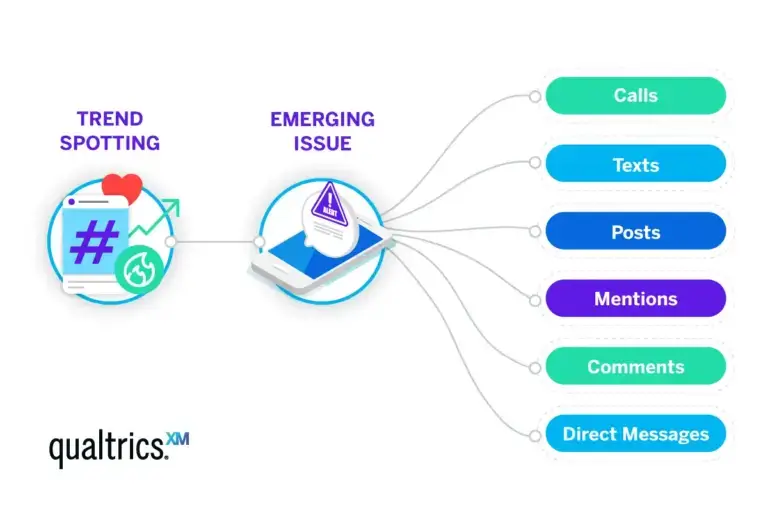
Ultimately, AI enables deeper customer understanding, quicker, and at scale – but it also means better service.
With AI you can attain a clearer insight into customer issues, remove guesswork, and free up more time for agents to focus on priority customers because the manual tasks and simpler customer issues are taken care of through technology. And that means better customer satisfaction, reduced cost to serve, and greater efficiency.
AI and human agents: A powerful partnership
AI in customer service isn’t a magic bullet.
There’s no replacement for truly effective customer service teams staffed by talented, empathetic human beings. That means it’s not AI’s job in the contact center to replace people; it should instead be there to help those people do their jobs to the best of their ability – and to feel empowered to do so.
Customer service teams have a tough job, so any help they get can make a world of difference to the overall customer experience. AI in customer service is that helping hand. Sure, you can use AI to run an effective chatbot, but that’s just one of its many abilities.
Getting the most out of AI in the contact center means choosing a software solution that puts more emphasis on how AI can help human agents than on removing them from the situation.
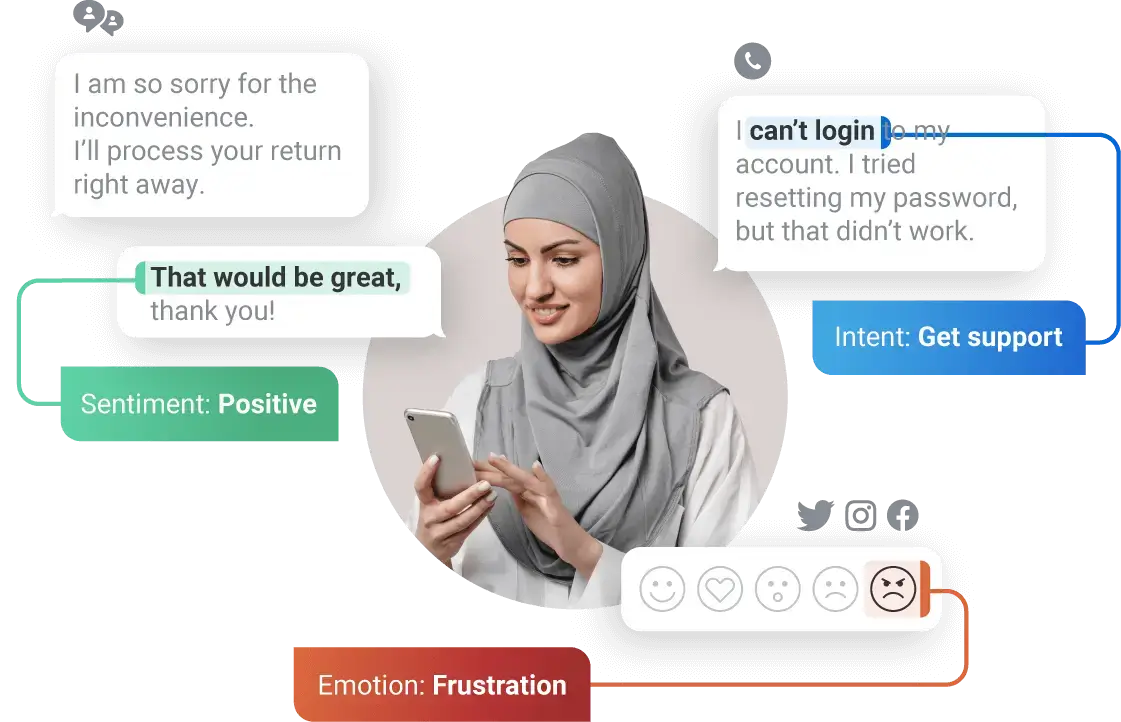
Qualtrics’ Customer Frontline software, for example, is a fully-featured customer service AI platform that’s been designed from the ground up to help transform customer service with real-time prompts, intelligent automations that agents love, and powerful NLP-powered insights that cut straight to the root of customer issues.
And, crucially, it’s all done in service of turning great agents into incredible ones.
Discover how AI can be your competitive advantage